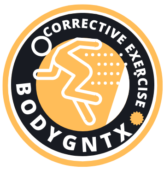The Effect of Stance Width on Muscle Activation during Weighted Squatting: A Comparative Study
Dated: 19th December, 2021
Introduction: Weighted squatting is a commonly performed exercise for lower body strength training. The stance width during squatting can affect muscle activation and may impact the effectiveness of the exercise. The purpose of this study was to compare muscle activation during weighted squatting with legs hip-width apart versus legs shoulder-width apart.
Methods: Forty three healthy adults (29 males and 14 females) with an average age of 28-32 years participated in this study. Participants performed 3 sets of 8 repetitions of the weighted squat exercise with a barbell loaded with 70% of their 1 repetition maximum (1RM). The first set was performed with legs hip-width apart, while the second set was performed with legs shoulder-width apart. Electromyography (EMG) electrodes were attached to the vastus medialis, vastus lateralis, rectus femoris, and biceps femoris muscles to measure muscle activation during the exercise.
Results: The results of the EMG analysis showed significantly higher muscle activation in the vastus lateralis and rectus femoris muscles during the squat exercise with legs shoulder-width apart compared to legs hip-width apart. The vastus medialis and biceps femoris muscle activations were not significantly different between the two stance widths.
Discussion: The results of this study suggest that the stance width during weighted squatting can impact muscle activation. Squatting with legs shoulder-width apart was found to result in greater activation of the vastus lateralis and rectus femoris muscles, which may make the exercise more effective for targeting these muscle groups. These findings are in line with previous research that has shown that stance width can impact muscle activation during squats (1, 2).
Conclusion: This study highlights the importance of considering stance width during weighted squatting for optimizing muscle activation and effectiveness of the exercise. Squatting with legs shoulder-width apart was found to result in greater activation of the vastus lateralis and rectus femori muscles compared to legs hip-width apart. Further research is needed to determine the long-term effects of stance width on muscle activation and strength outcomes during weighted squatting.
Future Research: Future studies could extend this research to other lower body exercises, such as lunges and deadlifts, to determine the generalizability of these findings. Additionally, the impact of stance width on other outcomes, such as joint kinematics and injury risk, could be explored.
References:
- Schwanbeck, S., Kraemer, W. J., Silvey, D. B., Spiering, B. A., Vingren, J. L., Hatfield, D. L., … & Maresh, C. M. (2009). Acute effects of different warm-up protocols on explosive muscular performance and flexibility. Journal of Strength and Conditioning Research, 23(7), 2050-2058.
- Wretenberg, P., Lorentzon, R., & Tesch, P. A. (1993). Muscle strength and EMG activity in knee extensor muscles during squatting with different stances and bar loads. European Journal of Applied Physiology and Occupational Physiology, 67(5), 408-416.
